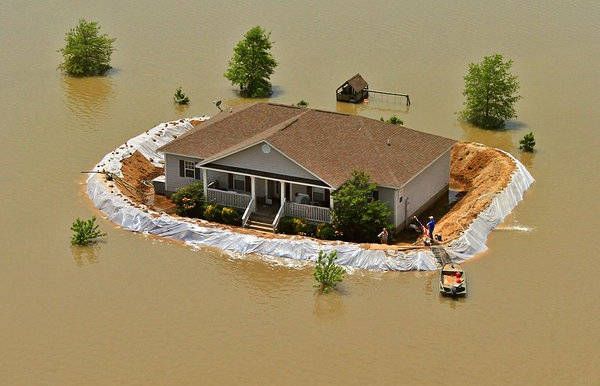The ongoing heavy rains in Kenya have caused floods in Nairobi and its environs such as Thika Road, Athi River, and Syokimay. It poses a significant threat to life and property with media reports of loss of life. Being prepared and knowing how to stay safe during a flood event is crucial for individuals and communities.
This article serves as a comprehensive guide to flood safety measures in Kenya, covering preparation, response, and recovery strategies tailored to the local context
Understanding Flood Risk in Kenya
Before delving into flood safety measures, it’s essential to understand the flood risk in Kenya. Flooding is a major issue across Kenya, affecting both urban areas like Nairobi as well as rural regions, especially in the country’s arid and semi-arid lands. The Kenya Meteorological Department provides valuable information on weather patterns and flood forecasts, enabling individuals and communities to anticipate and prepare for potential flood events.
Some areas in Nairobi and other parts of Kenya that are prone to severe flooding include but nor limited to:
- Nairobi, Kiamby and Machakos County, which lies just east of Nairobi, have been the most affected areas in Kenya due to the Nairobi River and Athi River bursting their banks.
- In Nairobi, heavy rain on April 2024 caused damage and flooding, with the Kenya National Highways Authority reporting parts of the Nairobi expressway and Thika road were blocked or flooded.
- Flooding has also affected other regions of Kenya, including:
- Gilgil in Nakuru County, where flash flooding on 27 March 2023 caused several deaths and injuries.[
- Narok County, where stormy weather including strong winds and heavy rain caused damage.
- Kajiado County, where homes were destroyed and at least 70 families displaced by floods in Ilbisil.
- Garissa County, where flash floods caused severe damage to major roads.
- West Pokot County, where two people died in flash floods.
- Kisumu County, where flooding prompted authorities to set up evacuation centers.
- Marsabit, Mandera, and Turkana counties in northern Kenya, where rivers broke their banks and caused widespread flooding and displacements.
Preparation before a flood
Preparation is key to mitigating the impact of flooding. Start by identifying whether your property is in a flood-prone area. The Kenya Red Cross Society and local authorities offer resources and guidance on flood risk assessment and preparedness planning. Additionally, develop a comprehensive flood kit containing essential items such as non-perishable food, water, first-aid supplies, flashlights, and important documents. Regularly review and replenish your flood kit to ensure readiness.
Related Posts:
Practical Tips Before a Flood:
- Elevate electrical appliances and valuables to higher levels within your home.
- Secure important documents and personal belongings in waterproof containers.
- Familiarize yourself with evacuation routes and emergency shelters in your area.
- Create a communication plan with family members and establish an emergency contact outside the flood-affected area.
- Keep emergency supplies, including food, water, medications, and pet supplies, readily accessible.
Property Flood Resilience Measures
Installing Property Flood Resilience (PFR) measures can help protect your property from flood damage. Consider investing in flood barriers, flood doors, raised electrical sockets, and water-resistant building materials. Collaborate with local authorities and community organizations to access resources and expertise for implementing PFR measures effectively. By fortifying your property against flooding, you can minimize damage and expedite the recovery process.
During a Flood
During a flood event, prioritize safety above all else. If floodwaters pose a threat to your safety, evacuate immediately and seek higher ground. Avoid walking, swimming, or driving through floodwaters, as even shallow water can be deceptive and dangerous. Turn off the main power supply to your property to reduce the risk of electrocution. If evacuation is necessary, ensure that all family members, including pets, are safely evacuated to designated emergency shelters.
How to stay safe during Floods in Nairobi
- Monitor local news and weather updates for real-time information on flood developments.
- Follow evacuation orders issued by authorities and move to higher ground if instructed.
- Avoid wading through floodwaters, as they may be contaminated and pose health risks.
- Keep emergency supplies and a battery-powered radio within reach for updates and communication.
- Assist neighbors who may require help evacuating or securing their property.
After a Flood
After the floodwaters recede, take necessary precautions to ensure safety and minimize health risks. Discard any food items that may have come into contact with floodwaters to prevent contamination. Boil tap water or use bottled water until water supplies are declared safe for consumption. Seek medical attention for any injuries or illnesses resulting from the flood, and avail yourself of crisis support services provided by organizations such as the Kenya Red Cross Society and local health authorities.
Practical Tips After a Flood
- Inspect your property for damage and take photographs for insurance claims.
- Clean and disinfect flooded areas thoroughly to prevent mold growth and bacterial contamination.
- Contact your insurance provider to file a claim and document all expenses related to flood damage.
- Collaborate with neighbors and community members to assist with cleanup and recovery efforts.
- Stay informed about available support services and resources for flood-affected individuals and communities.
How does Flood Impact on Agriculture in Africa?
Conclusion
Flood safety in Kenya requires a proactive and collaborative approach involving individuals, communities, and government agencies. By understanding flood risk, preparing adequately, implementing property flood resilience measures, and knowing how to respond during and after a flood, individuals can safeguard themselves, their families, and their property from the devastating impacts of flooding. Remember, staying informed, prepared, and vigilant is essential in mitigating the risks associated with floods. Together, we can build resilient communities and minimize the impact of flooding in Kenya.
- Centers for Disease Control and Prevention (CDC). “Flood Safety.” CDC Website.
- The Flood Hub. “Blog – Flood Safety.” The Flood Hub Website.
- National Institute for Health and Care Excellence (NICE). “Keeping children safe during a flood.” NICE Website.
- UNICEF. “Flood Safety Information.” Retrieved from UNICEF Website.
- British Red Cross. “How to prepare for floods and flooding.” British Red Cross Website.



